As funding is confirmed for a feasibility study into extending the Borders Railway to Carlisle, Andy Comfort explores the route beyond the Tweedbank buffers and hears from those campaigning to bring the trains back.
In this article:
As funding is confirmed for a feasibility study into extending the Borders Railway to Carlisle, Andy Comfort explores the route beyond the Tweedbank buffers and hears from those campaigning to bring the trains back.
In this article:
- The Borders Railway’s partial reopening in 2015 exceeded expectations, with 1.8 million passengers using it by 2018–19.
- A £10m feasibility study is underway to assess fully restoring the Waverley Route to Carlisle despite engineering and development obstacles.
- Campaigners stress that full reinstatement would transform connectivity, support future generations, and boost struggling Border communities.
January 6 1969 has lived long in the memories of the people of the Scottish Borders.
It was the day they lost their railway, the famous Waverley Route, and that weekend saw protests from locals at Galashiels, Melrose and Hawick.
The last southbound Sleeper train on the night of Sunday January 5 was halted in the small community of Newcastleton by villagers who had closed the level crossing gates and who were standing across the line.
It led to the arrest of local minister, the Reverend Brydon Maben. And he was only released after intervention from MP David Steel (later Lord Steel), who had boarded the train at Galashiels.
Author and railway expert David Spaven described the closure of the 98-mile line from Edinburgh to Carlisle as the worst of all the Beeching cuts.
And in the years after the track-lifting gangs had completed their work, few would have believed that trains would ever return to this part of the Borders.
However, after a long campaign, return they did. And this September marks ten years since a section was reopened from Edinburgh to Galashiels and a new terminus at Tweedbank.
Passenger forecasts for the reinstated line turned out to be pessimistic. It had been predicted that the line would carry 600,000 passengers a year, but by 2018-19, less than four years after the trains returned, it was handling 1.8 million passengers per year.
The half-hourly service was strengthened with the use of three-car Class 170s, as opposed to two-car Class 158s which were struggling to cope with passenger numbers on some services to and from the Scottish capital.
The car park at Tweedbank station became so busy that 100 extra spaces had to be added.
Founded in 1999, the Campaign for Borders Rail (CBR) describes itself as “one of the most successful grassroots rail campaigns in Great Britain - a story of concerned citizens from all walks of life getting together to right the 1969 injustice of complete closure of the 98-mile Waverley Route through the Scottish Borders”.
Campaigners say their claim is borne out by the successful reinstatement of the section to Galashiels and Tweedbank, but they are not stopping there.
Their ambition lies far beyond the buffer stops at Tweedbank, with the stated aim of reopening the entire length of the old Waverley Route, through Hawick and into Carlisle, to connect with trains on the West Coast Main Line.
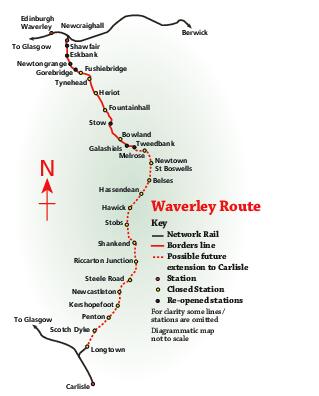
The CBR is not alone in its desire to see the full line reopened.
John Lamont, the MP for Berwickshire, Roxburgh and Selkirk, spoke to RAIL about why he backs the whole reinstatement of the line, and he welcomes the news from February of £10 million being allocated for a feasibility study - £5m from the Department for Transport with the Scottish government putting up the other £5m.
The money had been agreed in 2021 under the Borderlands Growth Deal, but the UK Labour government decided to carry out a spending review before committing to its share.
With that money now guaranteed, work can start on appointing a project manager to look at the possibility of reinstating the route south of Tweedbank.
“It’s good news and we want to see progress now as quickly as possible,” says Lamont.
“I very much want the route to go from Tweedbank down to Hawick, Newcastleton and onto Carlisle, very similar to where it went previously.
“Obviously, there are some challenges along that route now. Where the station used to be in Hawick, there’s now a supermarket and a leisure centre. And along the route there are all sorts of other challenges to be overcome.”
Could those logistical challenges, such as development in Hawick town centre and the building of the Melrose by-pass on the old track bed, be barriers to reopening the line?
Lamont does not underestimate the challenges, but he is optimistic: “The job of the feasibility study is to look and see - is there a route around those obstacles or is there an alternative route, and what are the costs associated with that?
“Ultimately, if there is only one practical route to deal with those challenges, the cost associated with that alternative route is up to the government of the day, the Scottish and UK governments, to decide whether they can find the money to justify that. But engineers are very clever people, and they can come up with solutions.”
Indeed, engineers had to come up with novel solutions to reopen the 30.5-mile section of the route from Portobello Junction (on the East Coast Main Line, east of Edinburgh) to Tweedbank.
An 80-metre span bridge was required at Hardengreen over a junction on the A7 road, 42 bridges were either built or reconstructed, and more than six miles of new roads were needed.
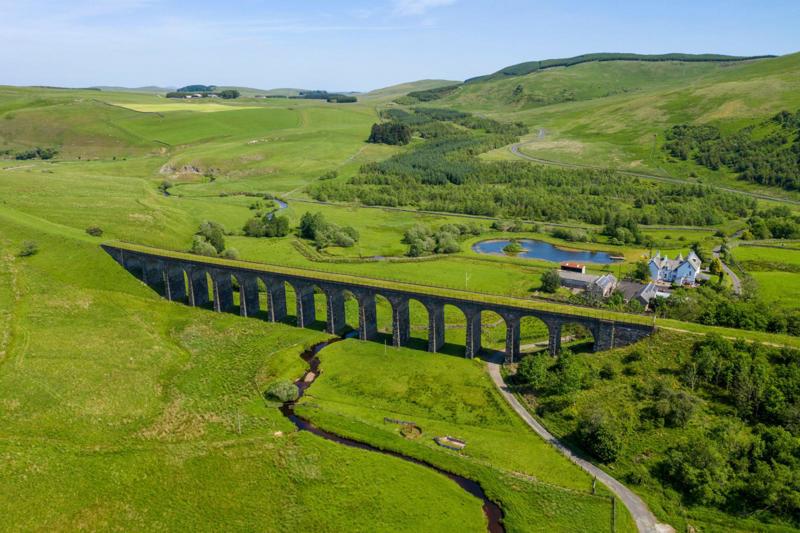
Routeing the line on a new alignment under the Edinburgh City Bypass required major civil engineering work, while extensive work was needed on that section owing to former mine workings near where Shawfair station now stands.
Probably one of the biggest challenges was bringing the railway back to Galashiels, where the original station had three platforms and goods sidings.
To the untrained eye, it might have seemed impossible that a railway line could be built through the town without extensive compulsory purchasing and demolition, but a solution was found.
A single-track line was built on part of the old track bed alongside the A7 Ladhope Vale, then squeezed through a gap at the back of the Asda supermarket and up onto a climbing gradient to the eastern side of the town centre to rejoin the former Waverley route.
Peter Heubeck is the Technical Adviser to the Campaign for Borders Rail. After roles in frontline operations, freight projects, and infrastructure planning, he became a project manager for Railtrack.
Praising the work of the team which built the Edinburgh to Tweedbank line, he believes similar work can overcome engineering challenges facing reinstatement of the line to Carlisle.
“I walked the route from Tweedbank to Newtown St Boswells with two ex-BR engineering colleagues of mine - one of whom was Hugh Wark, who was the project director for Phase One.
“We spent quite a while at the side of the Melrose by-pass working out how it could be done, and Hugh’s final comment to me was ‘Well, that’s not as hard as some of the problems we solved on Phase One’.
“Clearly there are some complex engineering works to be done in Melrose, but you can get the railway through. It will require some alterations to the by-pass, but it is doable.”
Melrose is about two miles beyond the current Tweedbank terminus and would pose one of the earliest challenges to engineers.
Alterations to the A68 road since the Waverley route was closed would also require significant engineering works near Newtown St Boswells.
Here, industrial units and car parks occupy the old track bed through the former junction station (the old line to Kelso and Tweedmouth on the East Coast Main Line branched off to the east, just south of the station).
A bridge is missing over the B6398 road just south of where the station (latterly known as just St Boswells) was situated.
But heading south and then south-west into open countryside the track bed is relatively intact with little encroachment. Heubeck believes the favourable alignment would permit a relatively high line speed.
Hawick would be the next major challenge. While the alignment of the old route is intact as far as just east of the town centre, the station site is now occupied by the Teviotdale Leisure Centre.
The viaduct over the River Teviot has been demolished, while a supermarket car park and a roundabout now stand where an embankment once carried Carlisle-bound trains out of Hawick.
Heubeck says the CBR believes there is a solution to the station site in Hawick. He tells RAIL that they have to trust the process of the feasibility study to come up with different options, and to not prejudge the outcome at this stage.
The town of Hawick probably suffered more than most after the closure of the railway in 1969. It used to be the largest town in the Scottish Borders, but its population has declined over the decades to 10,728 in the 2022 Census.
A 2022 report published by the Scottish Borders Council states: “Hawick has been affected more by depopulation than any other Borders town, with all parts of the town experiencing population loss, and Hawick Central is currently experiencing the highest depopulation out of the 30 Intermediate Zones in Scottish Borders.”
CBR Chair Marion Short, a resident of Hawick, says people in the town want the railway back. But the group is keen that any new line does not terminate there.
“We keep saying that not necessarily do we want it to become just another commuter train to Edinburgh. We would like a third cross-border route to connect us to the national network, and that’s very important. We use the example of you could get a train from Hawick to Carlisle, change, and get one to Manchester Airport.
“This feasibility study is not just from Tweedbank to Hawick. The feasibility study is from Tweedbank through to Carlisle.”
The CBR cites as a further reason to reinstate the railway the news that Scotland’s first Center Parcs holiday village could be built three miles north of Hawick.
The development is expected to create around 1,200 permanent and largely local jobs, and Short says the railway would help them get to and from work, with the possibility of shuttle buses connecting with a new Hawick station.
South of Hawick, the route has fewer obstacles, and the old track bed down to Longtown in Cumbria is safeguarded from development by local planning policies.
But that doesn’t mean it would all be plain sailing for construction teams. The 15-arch viaduct at Shankend (seven miles outside Hawick) survives, but further south the 1,208-yard Whitrope Tunnel has suffered several collapses over the years since the last train passed through.
At the southern portal of Whitrope Tunnel can be found the only railway tracks on the route to Longtown - the base of the Whitrope Heritage Centre.
An assortment of old Pacer trains, a Class 26 diesel locomotive, carriages and trucks sit on the former line before it curves towards the famous former railway junction at Riccarton.
This remote settlement once had its own post office and school, and the train was the only link to the outside world for the 118 residents, many of whom worked for the railway.
A forest track now leads to the desolate site, but the track bed here and down into Newcastleton is intact, apart from some farm buildings and the removal of the viaduct over Hermitage Water and the adjacent B6399 road.
Newcastleton would be a station if the railway were to reopen. And the sites of the old station and the level crossing (site of the January 1969 protests) are clearly visible.
There is, however, pressure from residents of Langholm, a town on the main A7 road between Hawick and Carlisle, for a reinstated railway to run through their town and not Newcastleton.
This is supported by Colin Smyth, Member of the Scottish Parliament (MSP) for South Scotland: “The economic benefits of the Borders Railway cannot be underestimated, and therefore it is vitally important that Langholm is included in the route.
“It is not just the town itself that would profit. The surrounding communities would also gain a vital advantage.
“Including a stop in Langholm would bring significant benefits to the Eskdale community and a local economy which has suffered a number of economic shocks in recent years.”
Lamont tells RAIL he very much wants a new railway to go via Newcastleton, but that the feasibility study would look at both the Newcastleton and Langholm options in terms of the route and costs.
The old Waverley route crossed the border into England at the small community of Kershopefoot, and apart from a missing viaduct over Liddel Water and some farm buildings encroaching on the track bed, the alignment on this section has fewer gradients and engineering challenges as it crosses low-lying farmland.
If the line were to be reinstated, some engineering work would be needed at Longtown (which would almost certainly be the last station before Carlisle), with commercial and industrial premises now occupying the site of the old station.
The CBR has concluded that the original Waverley route via Harker would present too many challenges for engineers, with considerable encroachment.
But an alternative exists, thanks to a little-used freight line which runs alongside the MoD distribution centre to the west of Longtown. This joins the West Coast Main Line at Mossband Junction for the remaining eight miles to Carlisle station.
In its Summary Case for a new cross-border rail link, the CBR concludes: “The scope and complexity of the required works does not appear to be greater than that already undertaken in the course of reinstating the line between Edinburgh and Tweedbank.”
As well as looking at route options, the feasibility study will examine the likely costs of reinstating the line to Hawick and Carlisle.
The Scottish government puts the cost of building the existing Borders Railway to Tweedbank at £294m at 2012 prices.
The CBR calculates the total cost, including land acquisition and construction, to have been about £350m at 2012 prices, an average of £11.5m per mile.
On this basis, the campaign group estimates that the capital cost for building a 56-mile route from Tweedbank to Mossband Junction would be £644m at 2012 prices, just under £908m in 2025 prices using the Bank of England inflation calculator.
The news of £10m for a feasibility study has been welcomed by politicians, both locally and nationally.
Euan Jardine, the Leader of Scottish Borders Council, says: “We have already seen the positive impact the Waverley line has brought to the Borders. This collaborative effort demonstrates the power of partnership in driving positive change and transforming our region for the better.”
Rail Minister Lord Peter Hendy adds: “I am pleased to commit to the progression of the Borders Railway extension, which would open up the route for more people to explore the region’s picturesque landscapes and rich heritage. I look forward to seeing how the proposal develops.
CBR Chair Marion Short does not want just an add-on to the existing line to Tweedbank: “We always call it the completion of the Borders Railway, not the extension of the Borders Railway. We’re firmly of the belief that this is for future generations, and it can only help.”
For the CBR, this is about the current and future needs of the community. Heubeck concludes: “It’s not because of some rosy-eyed view of what railways used to be like, and we’re only wanting to reopen it because there used to be one.
“It’s because the railway would make a practical difference to the prospects of people not yet born and young people here today in this fantastic part of the country.”
Login to continue reading
Or register with RAIL to keep up-to-date with the latest news, insight and opinion.

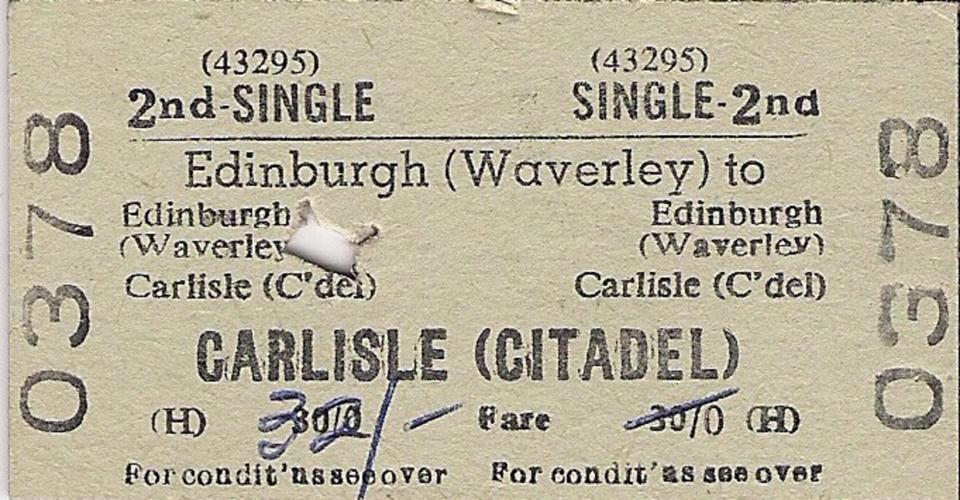

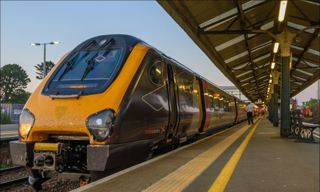
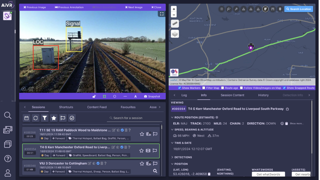
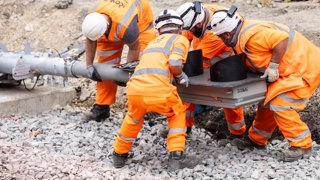
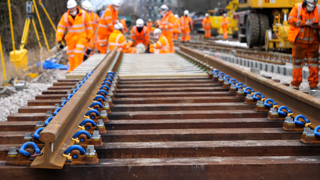










Login to comment
Comments
No comments have been made yet.